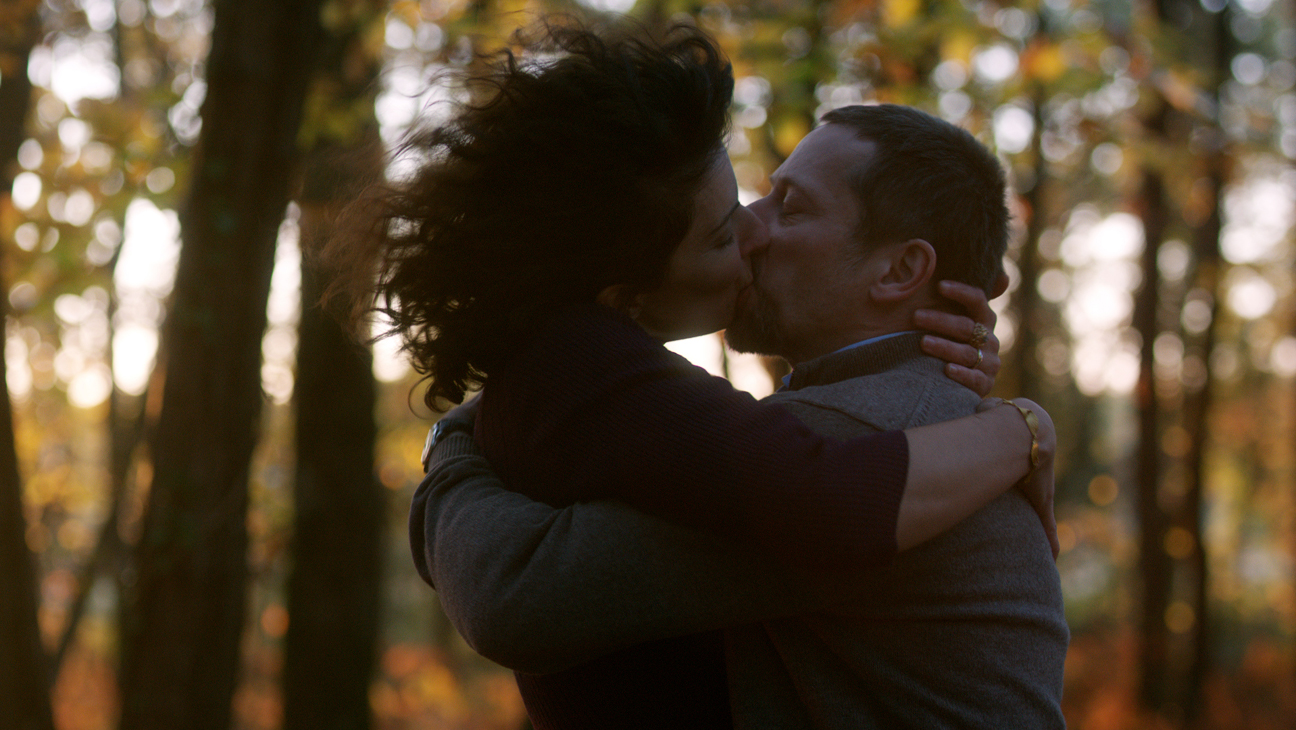
Two things that people do all the time: have sex, and worry about it. Or, as Georges Simenon wrote: “Can there be a more intimate communication between two beings than copulation?” Yet American films have largely forgotten the power of sexual drama. Thank heaven for French movies like Mathieu Amalric’s The Blue Room, which compactly addresses the ecstasies and occasionally dangerous consequences of intimate contact.
Simenon had ample opportunity to consider the dramatic possibilities of adulterous liaisons. According to his own testimony, he had sex with more than 10,000 women. As productive as he was profligate, Simenon wrote at least 200 novels, about 80 of them featuring the gruff, wily Inspector Jules Maigret, and a similar number of short stories. His no-nonsense prose and his view of modern life as ugly, brutish and short had a deep influence on the French cinema in its realistic mode. The astringent minimalism of French directors over the past 60 years may have been perfected by Robert Bresson, but it was inspired by the netherworld in which Simenon characters dwell.
The Belgian writer often portrayed men and women drawn into affairs that end in pain or violence. Among his finest essays on the wages of sex is his 1964 novel The Blue Room. As director, co-adaptor and star, Amalric has made the book into a film that is splendidly taut, forcefully understated and, at just 76 minutes, blessedly concise. It earns admiration both for the mood it creates and for the melodramatic excesses it avoids.
Julien Gahyde (Amalric), an apparently content husband and father, has for the past few months indulged in an affair with Esther Despierre (Stéphanie Cléau), the sultry wife of one of Julien’s old classmates. A tigress in bed, the passionate and possessive Esther bites Julien’s mouth, as if signaling to attentive eyes — those of his wife Delphine (Léa Drucker), for example — that he belongs to her. If she were free, Esther asks him, would he leave Delphine? His answer is enigmatic.
Two sudden deaths later, Julien and Esther are arrested, though the prosecuting judge (Laurent Poitrenaux) shines his primary searchlight on the philandering husband. The titular “blue room” refers not only to the site of his illicit assignations but also to the color of the trial chamber at the end of the film. Both are places where sex leads to severe judgment.
Shooting in the old “Academy ratio” (before wide screen) and making exemplary use of composer Grégoire Hetzel’s similarly classic score, Amalric expertly draws the noose of circumstance around Julien. He creates recurring visual motifs, like the housefly that indicates the first sign of trouble; the fly shape also appears as a drop of blood, from Esther’s love bite, on Julien’s white shirt.
Amalric plays an adulterer with the hapless half-grin of someone condemned for the merest infraction; in France, a husband’s sexual transgression is often considered no more serious than a parking ticket. The revelation is Cléau in her first major film role. (She also cowrote the script with Amalric.) Her unconventional beauty can express the allure of a dream lover or the quiet scheming of a demon. In a performance that disdains operatic excess, Cléau never raises her voice. She can seduce or threaten with the merest smile. Like this excellent little film, she achieves maximum impact with minimal means.
More Must-Reads From TIME
- The 100 Most Influential People of 2024
- The Revolution of Yulia Navalnaya
- 6 Compliments That Land Every Time
- What's the Deal With the Bitcoin Halving?
- If You're Dating Right Now , You're Brave: Column
- The AI That Could Heal a Divided Internet
- Fallout Is a Brilliant Model for the Future of Video Game Adaptations
- Want Weekly Recs on What to Watch, Read, and More? Sign Up for Worth Your Time
Contact us at letters@time.com